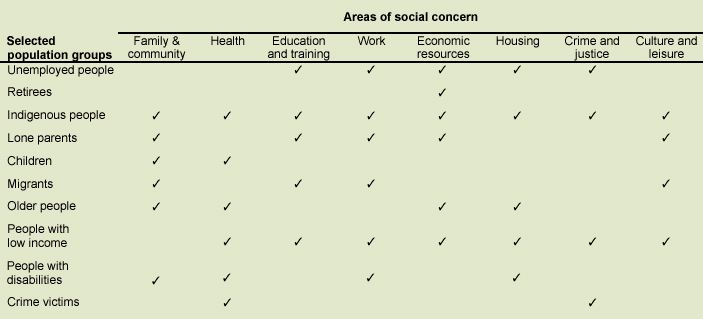Linking elements of the system
While the area of concern framework is useful, it can suggest that factors affecting wellbeing stay neatly within these defined areas. However, social issues are usually multidimensional, and it is therefore essential to develop links between the different areas of concern. While linking data across all the areas of concern is useful, the value of data from some areas is particularly enhanced by this process. For example, information on employment trends in particular occupation groups (produced by the work area of concern) can be used in conjunction with data about educational attainment and field of study (from the education and training area of concern) to identify future workforce issues. Demographic information about the ageing of the population, and the rate at which this is occurring, is crucial to formulating policy about income support for the elderly, which is also informed by data from the family and community, health and economic resources areas.
Other important links can be made by relating areas of social concern to population groups of interest. Some connections that may be particularly useful are indicated below. Statistics from the unemployed / education cell, may relate to retraining issues; and those from the unemployed / economic resources cell, to the eligibility criteria for unemployment benefits or the relative level of these benefits. In the row for Indigenous people, statistics from the intersection on crime and justice might address imprisonment rates, while those from the culture and leisure intersection might relate to the contribution of Indigenous people to Australian culture. Education and training statistics that relate to data about retirees and older people involve a less obvious connection, possibly describing life long learning.
While not all cells in the matrix below are of specific interest or are represented by current ABS collections or analysis, the layout is useful for identifying gaps in the ABS social statistics program, and suggesting areas that future programs might address. The matrix also stimulates ideas about what statistics could be valuable in informing issues that cut across boundaries.

 Print Page
Print Page
 Print All
Print All
 Print Page
Print Page
 Print All
Print All